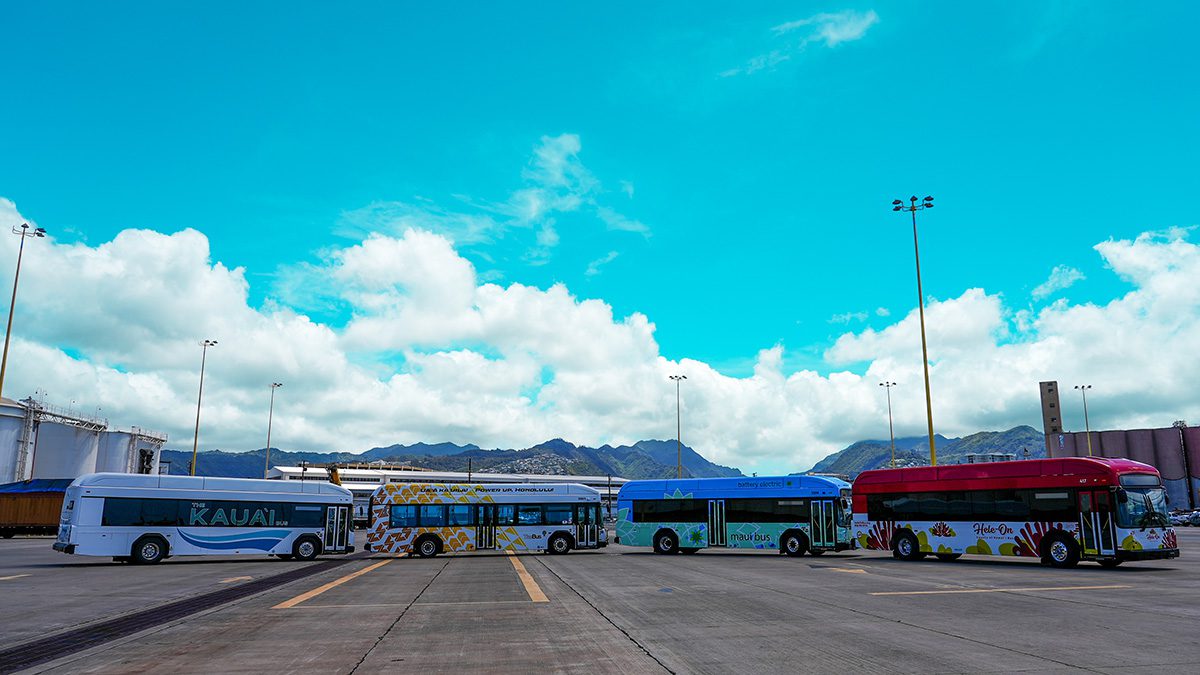New Gillig Battery Electric Buses arrive in Hawai’i

California-based transit bus manufacturer Gillig has delivered several of its new-generation Battery Electric Buses to the Counties of Kaua’i, Maui and Hawai’i Island. The new 35-foot buses were displayed at the recent Driving Hawai’i Forward event in Honolulu, which brought together officials from all of Hawai’i’s four counties to showcase statewide commitment to sustainable public transportation.
These new Gillig Battery Electric buses represent the latest generation of zero-emission vehicles built on Gillig’s Low-Floor platform, which has been tested over decades in the often corrosive and challenging Hawaiian landscape. Each new bus is equipped with 686 kWh of onboard energy storage.
“In 2020, our first electric bus, born in Livermore, California and manufactured by Gillig, arrived on our shores with great anticipation,” said John Nouchi, Deputy Director of Transportation Services for the City and County of Honolulu. “We immediately put that bus to the test. It effortlessly traversed every corner of this island… tackling our most demanding routes. Its performance exceeded all our expectations.”

The 17 Gillig Battery Electric Buses currently in service across Oʻahu average up to 200 miles per day, thanks to innovative scheduling and mid-day charging strategies. The new generation buses now being delivered to Kaua’i, Maui, and Hawai’i Island offer over 35% more onboard energy storage, delivering extended range and operational flexibility. Honolulu anticipates adding up to 78 of these next-generation Battery Electric Buses in the coming years, and plans to operate a fully zero-emission fleet by 2035.
“For more than 40 years, we’ve worked alongside Honolulu to support safe, reliable transit,” said Derek Maunus, CEO of Gillig. “Now, seeing all four counties come together to drive Hawai’i forward—each with our newest generation Battery Electric Buses—is incredibly meaningful.”
Funding for the multi-county procurement included $11.2 million from the Federal Transit Administration’s Low or No Emission and Bus and Bus Facilities programs, $3.53 million from the Hawai’i State Energy Office via Volkswagen Settlement funds, and additional county contributions.
Source: Gillig
Source link
